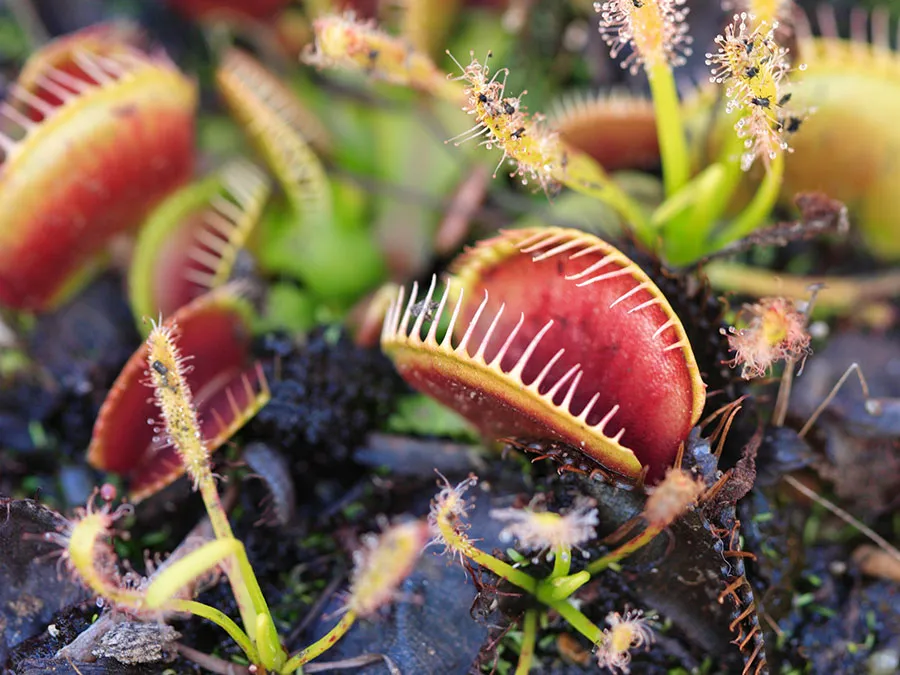By: Theodore Tong
Meat-eating plants come in many forms. For example, the Pitcher Plant comes covered in sweet nectar and a slippery coating. “You could get a really tall, deep pitcher that would be effective as a pitfall trap for larger animals,” says Kadeem Gilbert, a botanist who studies tropical Pitcher Plants at Michigan State University.
The way these Pitcher Plants eat is by attracting flies and other bugs with their sweet nectar. When the bugs are crawling up the pitcher plant, the slippery coating causes them to lose their footing. They then slip into the plant. Inside, there is a pool of enzymes that break the flies down into nutrients for the pitcher plants.
Another meat-eating plant is the Venus Flytrap, which is shaped like a taco. It also uses sweet nectar to attract bugs. When the bugs crawl into its mouth, the Venus Flytrap snaps it shut before also using enzymes to digest the bug.
But, could these menacing, meat-eating plants be able to digest a human? It may be possible in the future, but for now, it is not likely.
Even if the Pitcher Plant and Venus Flytrap turned into bigger plants, a human would be able to get out of the plant. The leaves are very fragile, so the human could just thrash around and rip a hole in the plant. Then, the human would get out before the meat-eating plant digested them.
However, there is one meat-eating plant that could be able to digest a human.
The Sundew Plant, instead of trapping a bug or a fly in its mouth, uses sticky substances to paralyze its victim. “The more you struggled, the more you would become enmeshed and the more your arms would be unable to function properly,” says ecologist Adam Cross. This plant would cause a human to panic and tire themselves out.
Ultimately, the carnivorous plants would not be able to eat humans. First, the plants are too small. Also, the plants would do a lousy job of attracting people with their sweet nectar.











